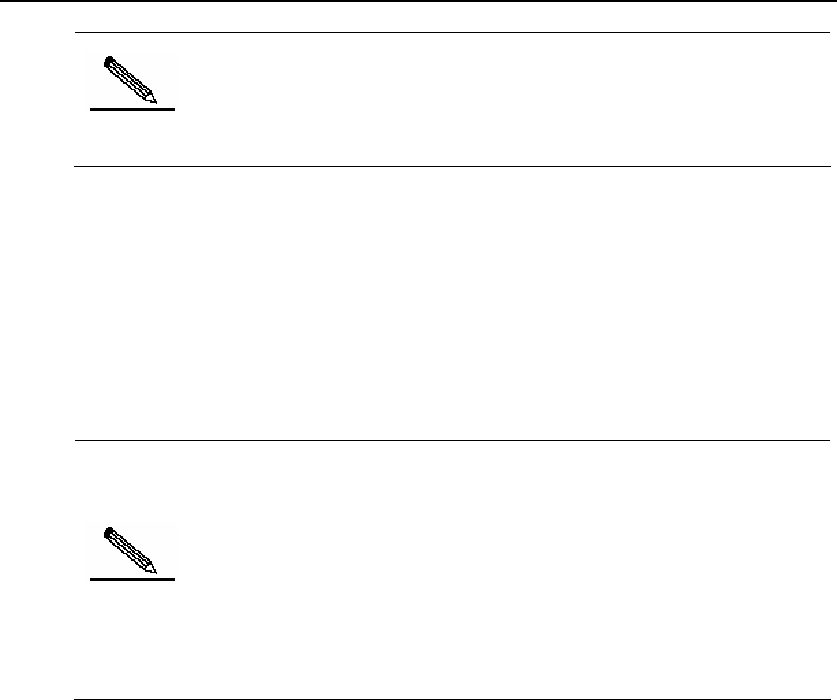
DES-7200 Configuration Guide Chapter 2 QoS Configuration
2-3
Note
The above criteria take effect only when the QoS trust mode of the port
is enabled. Enabling the QoS trust mode of a port does not mean
getting the QoS information directly from the message or the input port
of the message without analyzing the message contents.
If the policy-map associated with the port is using the ACL classifying based on
the MAC access-list extended, the associated ACLs will be matched by getting
the source MAC address, destination MAC address and Ethertype domain of the
message on that port, to determine the DSCP value of the message. Note that, if
a port is associated with a policy-map but has no DSCP value set for it, the switch
will assign the priority for the messages of this classification by performing the
default behavior: following the priority information contained in the layer-2 packet
header of the message or the default priority of the port.
Note
The above three criteria may apply simultaneously on the same port.
In this case, they will take effect according to the sequence 3, then 2
and then 1. In other words, the ACLs work first for the classifying
operation. When it fails, the criteria 2 will be used, and so on. Here, if
the QoS trust mode of the port is enabled, criteria 2 and 1 will be used
to get the QoS information directly from the message or the port;
otherwise, default DSCP value 0 will be assigned for the messages
failing the classifying operation.
For IP messages, the switch classifies the messages according to the following
criteria:
If the port trust mode is Trust ip-precedence, it extracts from the ip precedence
field (3 bits) of the IP message and fills the CoS field (3 bits) of the output
message.
If the port trust mode is Trust cos, it extracts directly the CoS field (3 bits) of the
message and overwrite the ip precedence field (3 bits) of the message. There are
the following two cases. Case 1 is that the layer-2 packet header does not contain
User Priority bits, and now the CoS value is got from the default CoS value of the
message input port. Case 2 is that the layer-2 packet header contains User
Priority bits, and now the CoS is got directly from the packet header.
If the Policy-map associated with the port is using the ACLs classifying based on
the ip access-list (extended), the associated ACLs will be matched by getting the
source IP address, destination IP address, Protocol field and layer-4 TCP/UDP
port field of the message, to determine the DSCP value of the message, and the
CoS value is determined according to the mapping from DSCP to CoS. Note that,
if a port is associated with a policy-map but has no DSCP value set for it, the
switch will use the above criteria 1 and 2 to determine the priority.


















